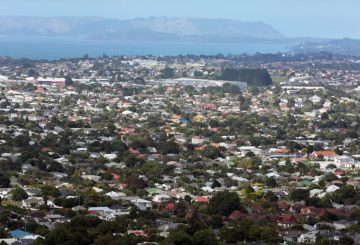Sinabi ni James Shaw na ang bagong pera ay ginawa itong isa sa pinakamalaking direktang mamumuhunan sa New Zealand na nakatuon sa pagbabago ng klima.
Sa isang anunsyo ng Pre-budget, sinabi ng Ministro ng Pagbabago ng Klima na si James Shaw na halos doble ng gobyerno ang halaga ng pera sa berdeng bangko ng pamumuhunan nito.
Ang Green Investment Finance ay isang komersyal, independiyenteng nilalang na naka-set up upang mamuhunan sa mga mababang emission firms.
Ang pondo – na naglalayong makatulong na itaboy ang mga emissions ng klima ng bansa – ay binigyan ng isang capital injection na $300 milyon sa bagong pera, na kinukuha ang kabuuang palayok nito sa $700m.
Dati itong nagpautang ng pera sa mga kumpanya na naglalagay ng mga solar panel sa mga komersyal na gusali, sa paglipat ng mga bus at komersyal na fleet sa mga de-koryenteng sasakyan, at sa pamumuhunan sa agrikultura sa mga pataba.
Sa ngayon 16 na pamumuhunan ang nagawa, at halos $280m sa kapital na nakatuon.
Sinabi ni Shaw nang walang bagong pamumuhunan ang pondo ay mai-tap sa susunod na taon.
Sinabi ni Shaw na ang bagong pera ay ginawa itong isa sa pinakamalaking direktang mamumuhunan sa New Zealand na nakatuon sa pagbabago ng klima.
Sinabi niya na ang GIF ay nagsisimula na makarating sa laki at sukat na nais niya, at ang iniksyon ng kapital ay malamang na tatagal ng tatlo hanggang limang taon.
Ang pera ay mula sa Climate Emergency Response Fund na pinakain mula sa kita na nakolekta mula sa scheme ng emissions trading.
Kredito: radionz.co.nz




























































